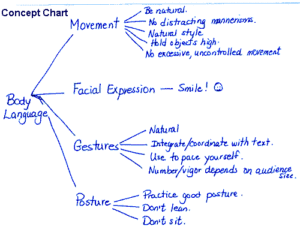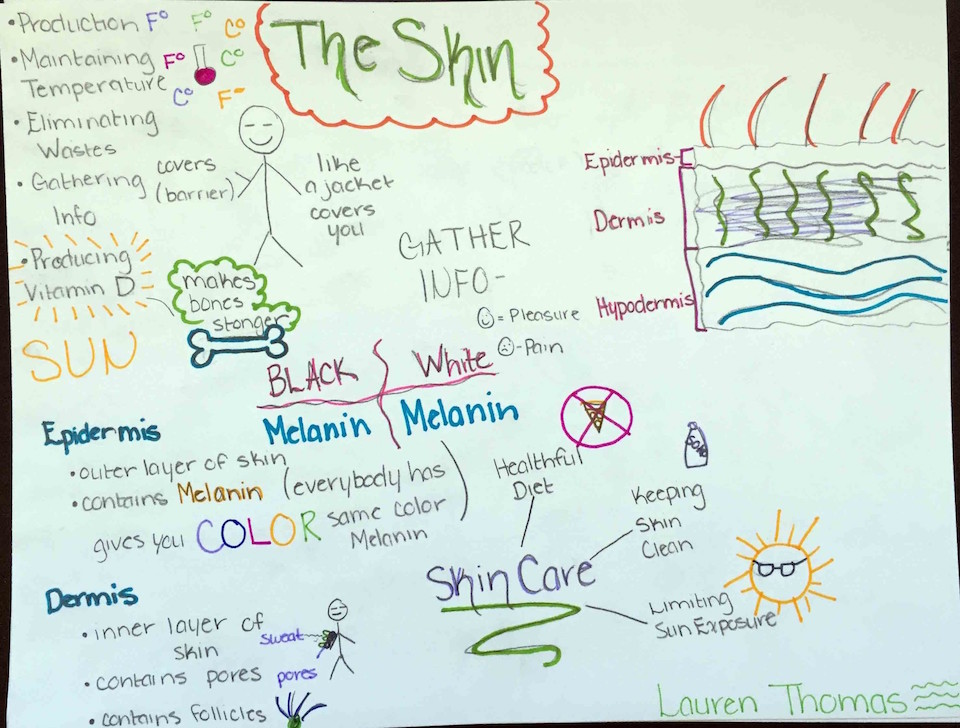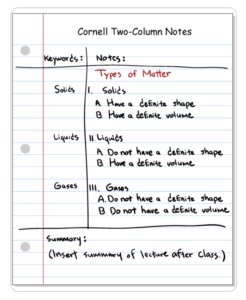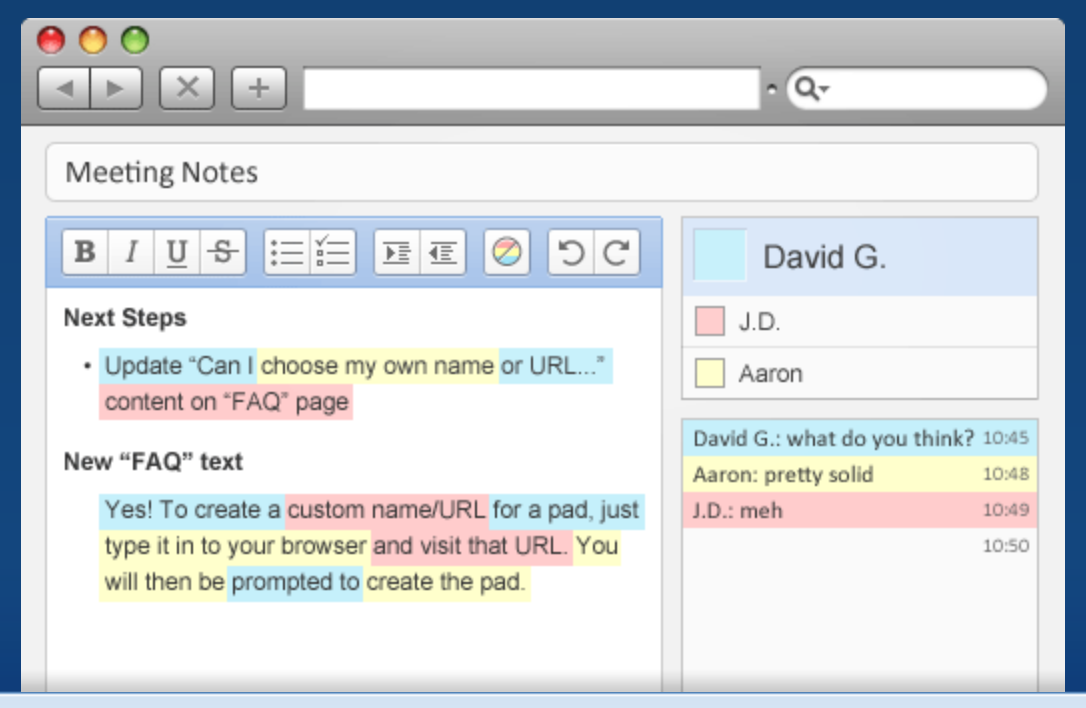Tips & Tools to Improve Student Notetaking Skills

I use notecards, sticky notes, apps on my phone, and even the back of my hand to record my thoughts, insights, and questions. I do it because I know that – no matter how interested I am in what I am learning – the human brain can only process and retain so much information.
Current research tells us that when done effectively, note-taking is an efficient, engaging strategy for learners to process, organize, and transform information (Fryer, 2014; Hattie, 2012).
But in the classroom, rarely do our students get excited about taking notes. Instead, they view it much like having to do pushups or running the mile during physical education – a tedious, uncomfortable process that must be endured but will eventually pass.
The good news is that with a few adjustments we can help students transform the painful process of note-taking into a terrific tool for thinking. Below are a few tips and tech tools that can help make it happen.
Note-taking: the first steps
When I was a brand new teacher, I mistakenly assumed that my students already knew how to take good notes, instead of working with them to foster the attentiveness and skills they needed to be successful at it.
After a few failed attempts, I was frustrated, and so were they. Now I realize that it takes time and practice to become a good note-taker.
In more recent years, I have encouraged my students to use a variety of note-taking techniques that help them to record increasing amounts of information with accuracy. Together, we experiment with different formats for notes and work at capturing information through abbreviations, diagrams, and symbols.
We practice one approach at a time and discuss which tools/approaches work best in various contexts and classes. Over time, students are encouraged to ‘mashup’ different note-taking approaches into a method that works well for them.
I have found it equally important to spend time with students on the cognitive skills required to be an effective note-taker. The process starts with developing learners’ ability to analyze new information, including how material is structured and how it is presented.
Teachers should also model and work with students to identify what information should be deleted, substituted or kept (Dean & Marzano, 2013). The goal should be to move students away from verbatim note-taking and memory storage, and instead, develop students’ ability to interpret ideas, evaluate and synthesize information, and enhance our memory (Chang, 2015).
‘Spotlighting’ Student Notes
Many years ago, when I was a middle school student, one of my teachers used to put examples of ‘stellar’ work on the wall. It was her ‘Wonderful Work Hall of Fame.’ As a squirrely, early-adolescent boy, I tended to rush through my work and seldom turned it in on time. Not surprisingly, it was quite rare that anything I completed ended up on the wall. But when it did…I was thrilled.

Each day that notes were taken, a couple of students’ work was selected as the ‘Neat Notes’ for the day. The students’ work was then hung on a prestigious bulletin board with big letters that read… ‘Neat Notes Hall of Fame’ until the end of the unit.
Other teachers seem to prefer to snap a quick picture of selected student notes and then upload them to a class website that is easy to maintain using something like Weebly or Flickr. Doing so seems to get students excited to have their work featured online and makes it possible for kids to review each other’s notes when they get home from school or if they missed class.
Whether we use a wall in our classroom or a website, educators should work to model, encourage, and highlight stellar student note-taking.
Sketch-noting: Get the Whole Brain Involved
As a kid, I remember being asked repeatedly to stop doodling while my teacher was presenting. Now, as an educator, I know better. Drawing, concept mapping, and visual notetaking are all ways to for students to use more of their brain to process and represent ideas through the use of ‘sketch-notes.’
The process by which students to combine verbal and visual information is referred to as Dual Coding Theory, and has proven effective in improving storage and recall of important information (Pavio, 2014).

Functions of the Skin (7th grader) – Source
While nearly every type of ‘sketch-noting’ activity mentioned above can be accomplished with a pencil and paper, a variety of technology tools exist to aid students and teachers in the process. For iPads and other Apple devices, Paper by WeTransfer is a great way for beginners to combine text, drawings, and pictures. Inkflow allows you to easily capture ideas and then resize and reorganize them with your fingers. Both are free.
Free Tech Tools for Collaborative Note-taking
Teachers can also create opportunities for their students to engage in collaborative note-taking. When students work together to identify and reflect upon key concepts, they learn from each other and have a chance to refine their own ideas and understanding.
Google Docs and Google Slides are two fantastic tools for learners to collaborate in real time. Each one makes it easy for students to combine verbal and visual information and to share it with others. In addition, teachers will appreciate how easy it is to create and share a template with their students format their notes.
One of my favorite tools for collaborative note-taking was TitanPad. While it provided many of the collaborative features offered by other tools, TitanPad used a color-coding system to keep track of individual student contributions. In this way, teachers were able to better gauge individual contributions within the group. While TitanPad is no longer supported, EtherPad offers similar features.
Be Strategic about Teaching Notetaking
Most teachers would agree that it is important for learners to take good notes. Not all of us, however, work strategically in the classroom to ensure that it happens.
I have heard it said that…’Anything worth doing is worth doing well.’ Taking notes is no exception. If we want to change our students’ perception of note-taking, we must help them to understand, experience, and refine the process.
Another MiddleWeb Read:
STEM & Visual Learning
Also browse Larry Ferlazzo’s collection
of some favorite note-taking articles.
References
Chang, L. W. (2015). Investigating note-taking in consecutive interpreting? Using the concept of visual grammar.
Dean, C. B., & Marzano, R. J. (2013). Classroom instruction that works: Research-based strategies for increasing student achievement. Boston, Mass: Pearson Education.
Fryer, W. A. (2014). Visual Notetaking: show what you know with media (Mapping Media to the Curriculum Book 5). Publications Archive of Wesley Fryer.
Hattie, J. (2012). Visible learning for teachers: Maximizing impact on learning. London: Routledge.
Paivio, A. (2014). Intelligence, dual coding theory, and the brain. Intelligence, 47, 141-158.
Another resource: 10 Strategies to Assist in Developing the Soft Skill of Note Taking (Teacher.org)




































You are so right that students have to be taught notetaking and that there are various formats. One technique my son’s teacher used was to let them use their notes while taking the exam, but no more than one page. The students figured out they could type and reduce the font. I don’t think they realized that in all this figuring they were studying their notes!
This IS a good idea. However, I would argue that getting them to write the notes by hand would be an even better improvement. (See here: https://www.theatlantic.com/technology/archive/2014/05/to-remember-a-lecture-better-take-notes-by-hand/361478/)
I agree it’s essential to try out a variety of methods to see which one works best for students.
I’d be interested to know what methods you tried. So far, we’ve done graphic organisers (organised by section), Cornell notes, mindmaps and free note-taking.
Fantastic idea. Thank you, Mary.
I take notes by doodling them down – i am visual
Hello! What age/grade did you begin teaching students the variety of note-taking strategies as well as the cognitive processes that “match” with different methods of organization?
Elyse….great question. I truly believe that the earlier we start, the better. I have even been in early elementary classrooms where teachers are working to build a foundation for effective note-taking. They seek to model a couple of different strategies very clearly. Each strategy they choose to work on with students is well-modeled and scaffolded. But over time….even our youngest students seem to develop greater autonomy and confidence in their ability to identify and record important information.
Thank you so much. I have been wondering how to use more technology with note taking.
And thanks for providing a reference list :)
Debbie – in using tech, I’d be more inclined to have them take notes by hand (see post above for article on this) and then use technology to help them remember e.g. Quizlet, Cerego etc. I wouldn’t have them take notes by typing for many reasons including distraction and verbatim note-taking (which means less processing).
Hello. Great article! I teach grad students and am finding that many of them do not know how to effectively take notes. Most rely on PowerPoint slides and just write a few words by each slide. What are your thoughts on teaching students in higher ed note-taking strategies? If the topic is addressed, should it be done within a course or offered as a bonus session (online or in person) outside of class time; if the former, I worry about cutting into instructional time, and if the latter I worry no one will participate. I don’t want to talk down to or bore my students but rather genuinely want to support learning through facilitating better note taking.
Stephanie – I’d integrate it into any course of study. It doesn’t have to be onerous. Just introduce the method (5 minutes) and let them try it out. You might collect the first attempt in to see how it seemed to work for your students – did they get the key details? Don’t forget you can also use technology to provide instruction out of class time, either by making your own videos (time-consuming but you can zoom in on the specific skills you are trying to develop) or finding some on Youtube, Teachertube or similar.